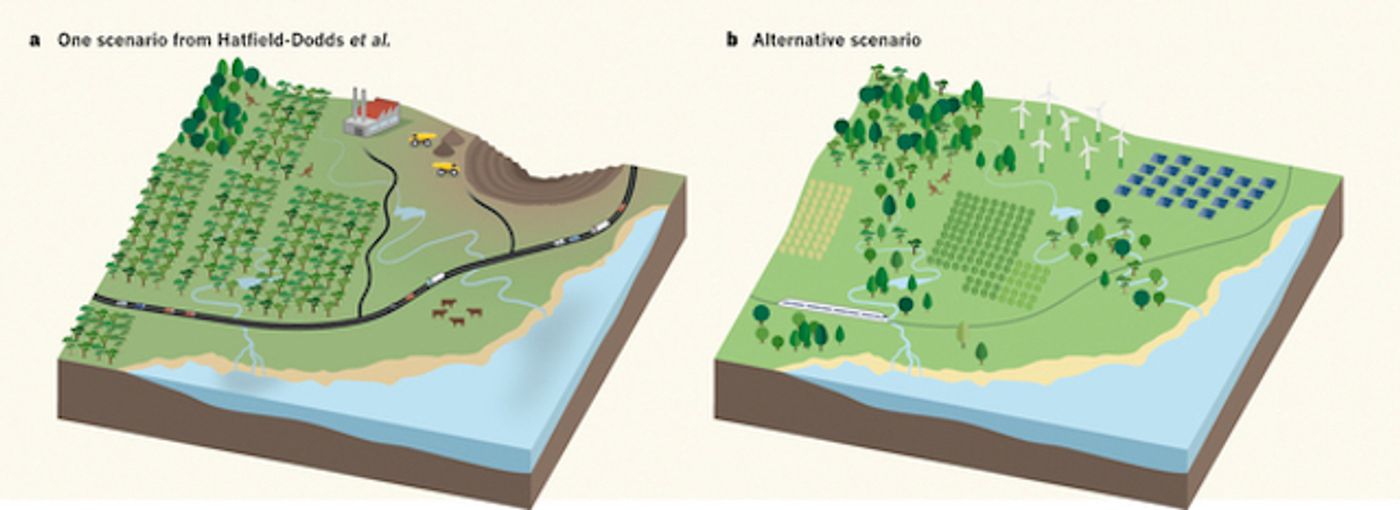Australia’s economy is currently quite healthy. It’s experiencing significant economic growth. It may surprise you to learn, though, that per-capita Australians currently have some of the largest environmental footprints in the world. Currently Australia’s economy is based largely on the export of agricultural products, coal and other emissions-intensive commodities. Some sort of binding international agreement is definitely on the horizon, and Many Australians concerned that their country signing on to such an agreement would hurt the nation’s economic growth. A recently published study by Australia’s Commonwealth Scientific and Industrial Research Organization shows that, with some work, Australia could, in fact, both conform to limits on its contribution to global warming and continue its current economic growth.

How? The keys are: the establishment of an international carbon tax and trading system, improvements in efficiency, removal of atmospheric carbon through planting forests (otherwise known as afforestation) and capturing and storing carbon emissions at their source, before they make their way into the atmosphere.
The new study ran simulations on a number of possible scenarios for Australia’s economy, based on several different models, to estimate the effect on Australia's economy within the global market. All of the scenarios focused on the agriculture, energy and transportation sectors of Australia’s economy because they are the ones that exert the greatest pressures on land, water and the climate. It modeled the interaction of global, national and sub-national dynamics which would affect the country’s environment and economy.
The only scenarios that allowed Australia to continue its economic growth and conform to what are likely to be the international limits on its carbon emissions, however, relayed on the establishment of a comprehensive international system for the pricing and trading of carbon emissions. Though these scenarios envision some increase the amount of green energy Australia will produce, they don’t call for an end to the burning of fossil fuels in Australia, or to the production of greenhouse gasses by industry there. They call for the capturing and storing some of these emissions, and offsetting some of them through afforestation.
The study predicts that Australia's GDP will more than double by 2050. Without carbon pricing greenhouse-gas emissions would be projected to increase by up to 90% in that time. But with a carbon tax system, the large-scale afforestation programs the study recommends could both offset this rise in emissions and function as a profitable export industry through the sale of carbon credits to other countries.
The possible Achilles’ heel of these scenarios is that they rely on the development of carbon capture and storage technologies. The problem is, this has never been done successfully, and there are a lot of scientists who don’t think it ever will. So, relying on the development of these technologies is a definite gamble. If it pans out, however, Australia will have a good roadmap to a sustainable future.
Source:
Nature









